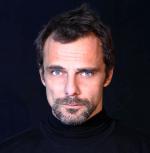1
- Home
- News
-
Celebs
- By Profession
- Actor
- Actress
- Animation Department
- Art Department
- Art Director
- Camera and Electrical Department
- Casting Department
- Casting Director
- Cinematographer
- Composer
- Costume and Wardrobe Department
- Costume Designer
- Director
- Editor
- Editorial Department
- Make-Up Department
- Miscellaneous Crew
- Music Department
- Producer
- Production Designer
- Production Manager
- Second Unit Director or Assistant Director
- Self
- Set Decorator
- Sound Department
- Soundtrack
- Special Effects
- Stunts
- Thanks
- Transportation Department
- Uncategorised
- Visual Effects
- Writer
- By Country
- By Birth Year
- By Rating
- By Profession
- About Us
- Contact














